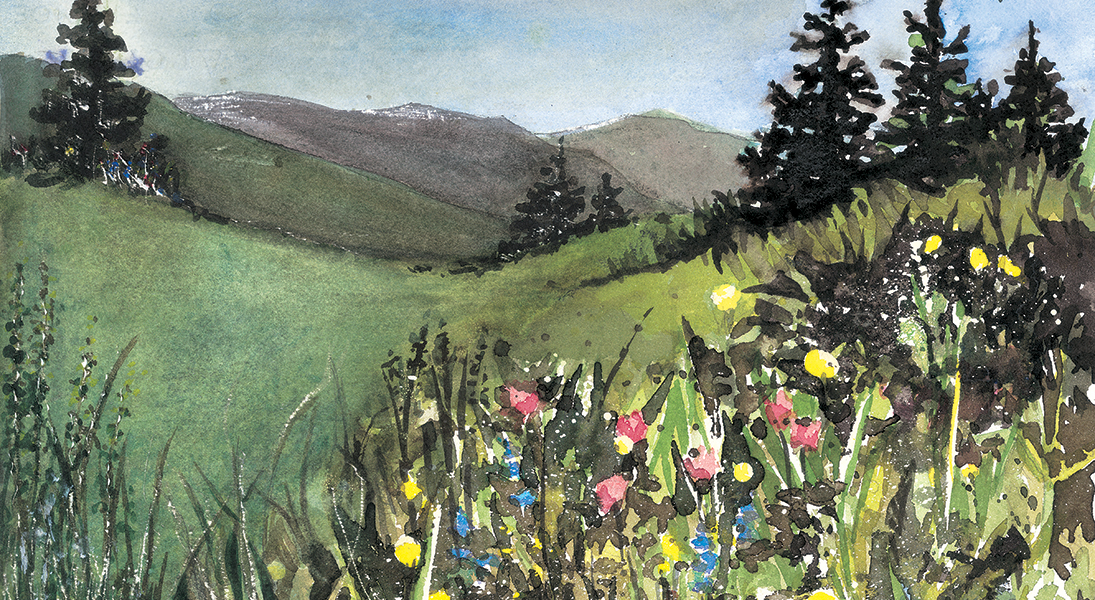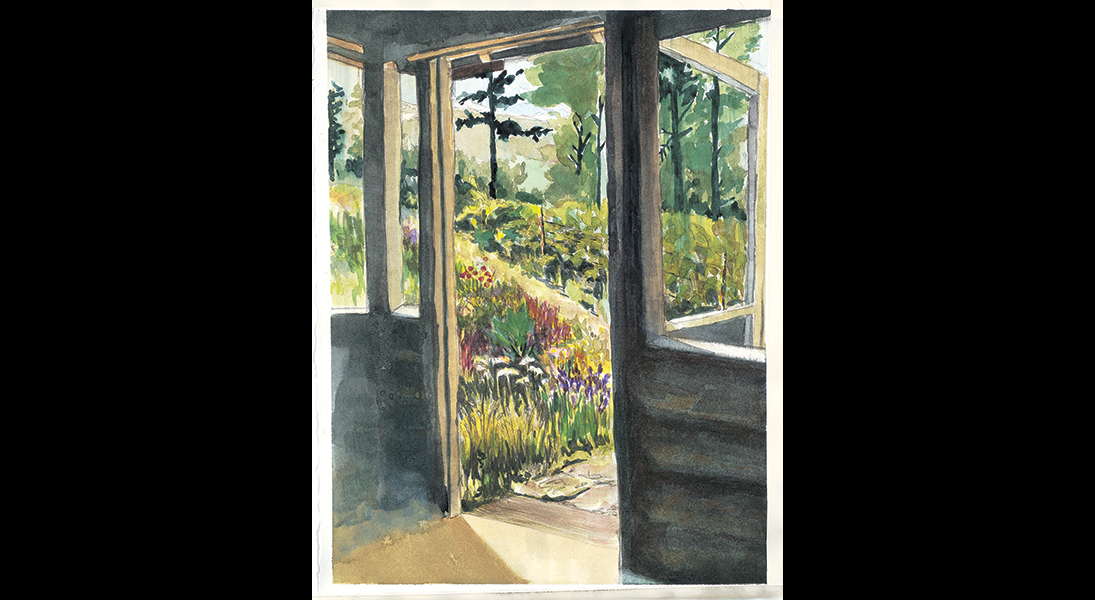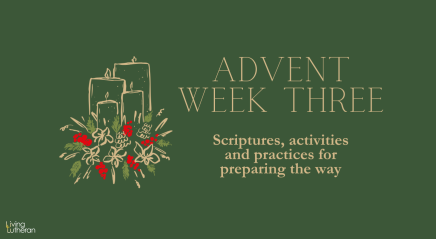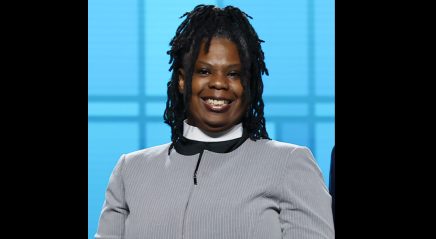As the elderly woman lay on her bed with death very near, her 4-year-old granddaughter asked, “Why are those ducks flying near your bed?” Her grandmother replied simply, “Oh, you mean the angels who are here with me?” Other family members saw nothing.
Ducks? Angels? What were those things that were visible only to a dying woman and her toddler granddaughter?
“Heavenly beings?” suggested Beth Walch, a pastor of Lord of Life Lutheran Church, Bismarck, N.D. The dying grandmother was Walch’s Aunt Patty, and for years the story of ducks and angels has stirred family curiosity and faith.
“I have no doubt that there are heavenly beings attending us in our transition,” said Walch, who in seminary was trained as an “end-of-life doula” to accompany the dying and their families. Some dying people experience what hospice workers term “nearing-death awareness,” with visions of angels or departed loved ones, voices from the past, a powerful sense of God’s comforting presence or a glimpse into paradise itself.
“Those are God events,” said Karen Minnich-Sadler, a former hospice chaplain who now serves Holy Trinity Lutheran Church, Ephrata, Pa. She describes nearing-death awareness as a special outpouring of God’s grace, when “the veil is lifted” between this world and the next as the dying are in between.
“I think these things happen so people are not so afraid,” Minnich-Sadler said. She recalled serving a woman who was over 100 and had been blind for many years. On the day she died, “all of a sudden she opened her eyes and she said, ‘Oh my word! It … is … so beautiful,’ ” said Minnich-Sadler, who is convinced, as is the family, that the dying woman was given a heavenly vision.
“I do believe that when we leave this life we simply leave this dimension and go home to God,” she added.
Death comes to us all, and for many people and the loved ones who accompany them on the journey from death to new life, end of life can be a profoundly spiritual and holy time. After ministering to dying loved ones, friends and family often find their own faith strengthened and their lives renewed.
Despite this, in our North American culture, death and dying often remain widely feared, mostly avoided and generally misunderstood. But a growing number of ministries is hoping to educate and equip Christians to reclaim the holiness and common humanity of end of life, and help vanquish the fear.
Freed from the fear
“We’ve always been frightened of death in the same way that we’re scared of the dark,” said Victoria Larson, pastor of Trinity Lutheran Church, Steelton, Pa., who led a monthlong emphasis on end-of-life issues last November. “It’s the unknown, and there’s something inherently frightening about that for us.”
For worship in the weeks that culminated with Reign of Christ Sunday (Nov. 26), Larson wrote liturgical pieces that highlighted themes of life, death and grieving. She also stressed those elements in preaching from the appointed lectionary readings. After services, over coffee and refreshments, there was a time of learning with special guests (including a funeral director), sharing and exploration. Larson planned the series after sensing a need.
“Death is not something we talk about enough in the church,” she said, adding that it’s a shame. “Our faith does have something beautiful and strong and powerful and life-altering to say in the face of death, and we deserve to get to talk about that without fear because Christ did die for us, and that releases us from our fear of the power of death.”
A similar sense that there was great interest in death and that the church needed to address it more intently led Shauna Hannan to teach an interdisciplinary class, simply titled “Death,” at Pacific Lutheran Seminary in Berkeley, Calif.
“Our faith does have something beautiful and strong and powerful and life-altering to say in the face of death, and we deserve to get to talk about that without fear because Christ did die for us, and that releases us from our fear of the power of death.”
“People want to have that conversation about death,” said Hannan, associate professor of homiletics. The class exposed future church leaders to end-of-life issues from a variety of cultural and religious viewpoints, as well as diving deep into the practical pastoral aspects of working with families in times of loss.
“It was just eye-opening to hear how different people interact with death,” said Brandon Peck, a second-year student at Pacific. The 24-year-old didn’t have much experience with end-of-life issues but said he now feels comfortable with the topic.
Peck now sees clearly the negative implications of our culture’s discomfort with death: “I wonder if we let our fear of death get in the way of taking care of each [other] as a community.” For instance, because people don’t know what to say to someone who is dying or has suffered a loss, we tend not to say anything, he added.
In addition to exploring death by visiting a funeral home, cemetery and other sites, the seminary class also spent time with a “Death Café” group that met in a library. Death Café is an international nonreligious grass-roots movement that gathers people interested in talking about issues of death and dying.
“It was really just an informal group to make it less stigmatized to talk about death,” said Jennifer Matas, a second-year seminarian at Pacific who signed up for the class to prepare her for a career as a church pastor. “It just opens up space for people to talk about death.”
Such conversations, Hannan agreed, are not only necessary but something our church should lead. “We need to get in on it as Christian faith leaders,” she said. If the church doesn’t educate and talk about end of life, God’s people may be left with our culture’s misleading or harmful understandings about death—something Hannan calls “embedded theology.”
For example, Hannan remembered a family that lost a child. One family member clung to the belief that it was God’s will, not in a general sense, but that God specifically wanted the child to die.
“What’s our role as a faith leader?” she asked. “Just to let them have those thoughts?” A better approach would involve faithful conversations and education in church about who God is and God’s role in the day-to-day events of the world.
Healthy closure
Hannan became interested in our culture’s and our faith’s reluctance to talk about death as a young pastor in Moorhead, Minn. To model herself as someone willing to think and talk about death, she joined a workshop in which she built her own casket. Serving as a bookshelf until it’s needed for its intended purpose, the casket is a conversation starter that can get people thinking and talking about their end of days.
“When I see my casket on a daily basis, I’m reminded of my death first thing, and it actually sort of tells me to embrace life as I have it right now,” Hannan said. “To talk about death and to reflect on death, it changes how we live.”
“When I see my casket on a daily basis, I’m reminded of my death first thing, and it actually sort of tells me to embrace life as I have it right now.”
Although making her own casket raised eyebrows for many in Hannan’s circles, not everybody was surprised. “My Dad said, ‘Oh, our family used to do that all the time, and then we’d have the funeral viewing in the parlor,’ ” she said. “That’s what parlors were for.”
The comment serves as a reminder that only a few generations ago, deaths at home, as opposed to a hospital or nursing home, were the norm. Families then were intimately involved with the dying process, both as caregivers and witnesses.
That may be one reason our culture has developed a fear about death and a reluctance to talk about it. When people approach death, we send them away to a hospital or nursing home, and then when they die their bodies are taken to morticians.
“We kind of put people away, don’t we? … Out of sight, out of mind,” said Paul Palumbo, pastor of Lake Chelan Lutheran Church, Chelan, Wash.
When families accompany a loved one intensively through the end of life, they not only witness that death is a natural part of life, they also can “say goodbye” and put healthy closure to the relationship.
Moreover, facing end of life can be terrifying for a dying person if they are all alone and away from home, in a sterile hospital room lit by fluorescent lights and filled with equipment that continually blinks and beeps.
“It’s the aloneness that’s frightening,” Palumbo said. “I don’t see that fear when there’s 10 people around them singing.”
In fact, gathering people to sing—and pray and watch and wait—at the bedside of a dying brother or sister is precisely the approach that Lake Chelan takes in its ministry of accompaniment at end of life.
The ministry took off after the congregation experienced an unusual number of deaths and serious illnesses in 2007. As the congregation dealt with the losses, Palumbo said, leaders discovered that many members felt anxious, awkward and unprepared around dying friends and their loved ones. They needed help with the practical aspects.
“People were afraid of saying the wrong thing, doing the wrong thing,” he said.
But the more that Palumbo and other leaders worked with members on accompanying the dying and their families, the more comfortable the congregation became. “They found that it wasn’t a horrible thing,” he said. “It really was a blessing to be there.”
A shared journey
To help other Christians in their ministries to the dying and their families, Palumbo and members of Lake Chelan, including musician Rolf Vegdahl and artist Wendy Schramm, created a liturgical resource, Peace at the Last: Visitation with the Dying (Augsburg Fortress, 2016). It contains artwork, prayers, Scripture, music and rituals to help family and friends accompany a loved one at the end of life.
“It was Pastor Paul’s focus on how we could accompany the dying and how we could accompany families of the dying,” said Kathy Schuldt, a member of Lake Chelan. The congregation now goes all out to surround the dying and their loved ones with support, care, prayer and assistance with daily chores and meals.
Schuldt’s family experienced that accompaniment firsthand with her 94-year-old mother-in-law, Effie Lois Schuldt, in 2016. Sensing that her death was near, the family kept her at home, and for 10 days they experienced the love of the congregation, which looked in on them, helped with household tasks and stayed overnight, if needed. Around six members also gathered in the home several times for the Peace at the Last service.
“Mom really enjoyed when they came, and it was always some songs and some prayers, and that was good for her. That was important, but it was also important for us,” Schuldt said. “After she passed away, there was a group of ladies from church who came and stayed and helped wash the body, and we did that service again.”
Looking back, Schuldt said the congregation made it possible for her mother-in-law and family to experience the at-home death. “It would have been so hard to not have had that support, to not have the caring, when you were so tired you didn’t know what to do yourself,” she said.
In caring for the dying and their families, Lake Chelan is simply reclaiming what faith communities ought to do, Palumbo said. Whether people die at home or in a hospital, their brothers and sisters in the faith have a responsibility to make the journey easier. The shame is that too many people die alone and afraid, especially when they are in institutions.
“The church has these incredible gifts that we can offer,” Palumbo said. “We have a lot of things that we can do, but we have to just say, ‘Yes, we’re going to do that.’ ”
Accompanying the dying and their families helps not only those facing end of life to experience the beauty, joy, sacredness and natural wonder that death can bring, but also those who minister to them.
“It certainly encouraged me and helped me in my journey,” said Walch, the pastor who had worked as an end-of-life doula. “I wanted more people to know that God loved them.”
Peace at the Last contains a ritual of marking—anointing—the body of the dying or dead loved one that is reminiscent of the anointing done at baptism. The ritual helps brings closure to life and fulfillment of God’s greatest hope and promise to us.
“It’s all about death—and life!” Palumbo said.













